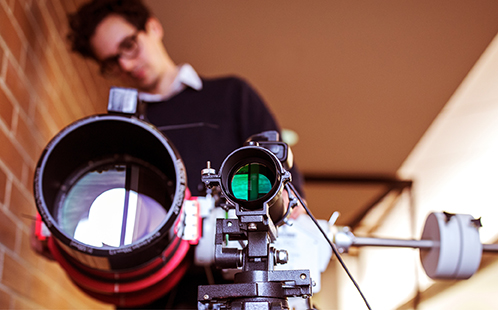
Western Sydney University has announced the award of five ARC-LIEF grants for new scientific infrastructure partnerships.
Australian Research Council Linkage Infrastructure, Equipment and Facilities (ARC-LIEF) grants are intended to facilitate the sharing of expensive research infrastructure, equipment and facilities between higher education organisations and industry partners.
Professor Deborah Sweeney, Deputy Vice-Chancellor and Vice President (Research, Enterprise and International) at Western Sydney, said that the scheme also fosters collaboration through its support of the co-operative use of national and international research facilities.
“World-class science demands access to the latest equipment and facilities. These innovative partnerships extend the capabilities of our researchers, to uncover new findings and deliver new insights in priority areas such as astronomy, microscopy and construction,” she said.
The University’s successful grant partnerships are:
- Associate Professor Fidelis Mashiri (School of Engineering) and The University of Sydney led development of the Australian Stress Engineering Facility. The facility will have several pieces of equipment including a Portable X-ray Diffraction System (XRD) capable of in-field analysis of major and minor mineral components.
- Professors Richard Yang and Yang Xiang (School of Engineering) and The University of Sydney based Electron microscopy facilities for in-situ materials characterisation. The facility will increase capacity of high-resolution in-situ transmission electron microscopy through the introduction of special in-situ specimen holders and an imaging detector.
- Dr Nicholas Tothill (School of Science) and The University of Adelaide led development of The Cherenkov Telescope Array. The Cherenkov Telescope Array will be a transformational facility in very-high-energy gamma-ray astronomy.
- Dr Pejman Sharafi (Centre for Infrastructure Engineering) and the Monash University based Platform for collaborative robotics for structural assembly and construction automation. The facility will provide a unique platform for research on structural assembly and construction automation.
- Dr Leo Zhang (School of Engineering) and The University of Sydney based 3D Two-Photon Nanoprinter for Advanced Multi-Functional Materials & Devices. This nanoprinter is an ideal instrument for the highest precision 3D printing for a broad range of use cases.
Stay up to date by getting stories like this delivered to your mailbox.
Sign up to receive our free weekly Spatial Source newsletter.






